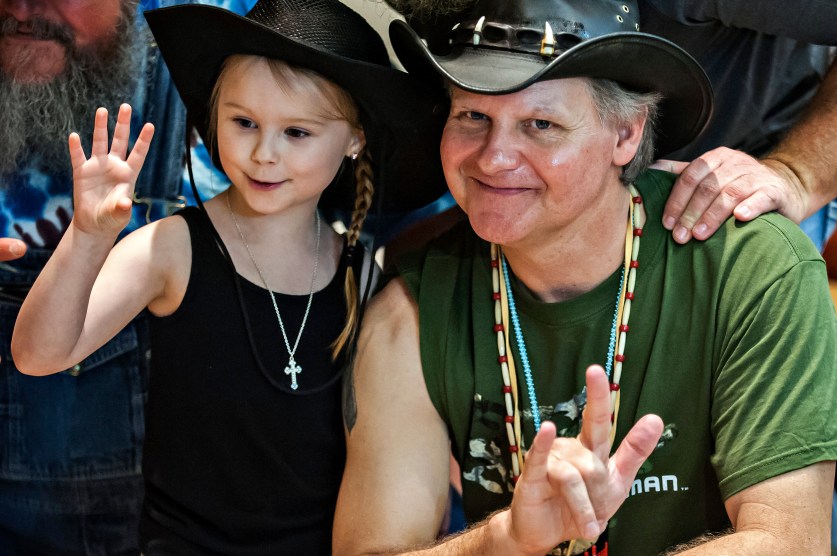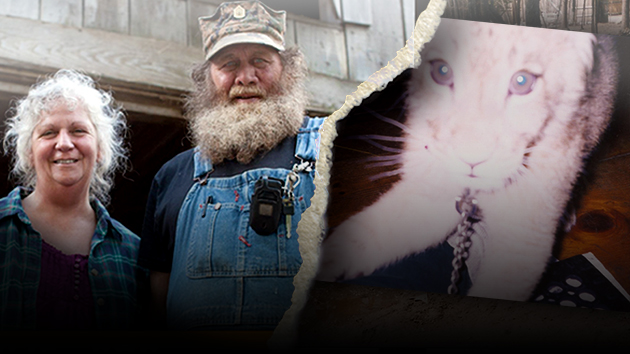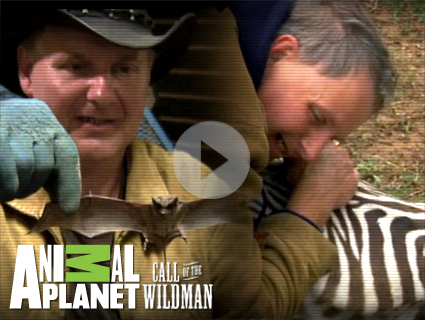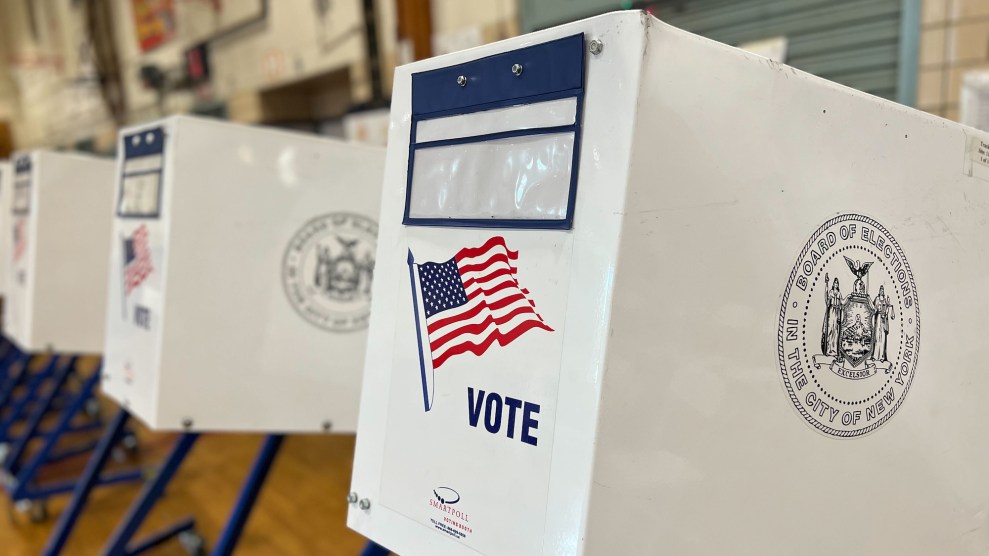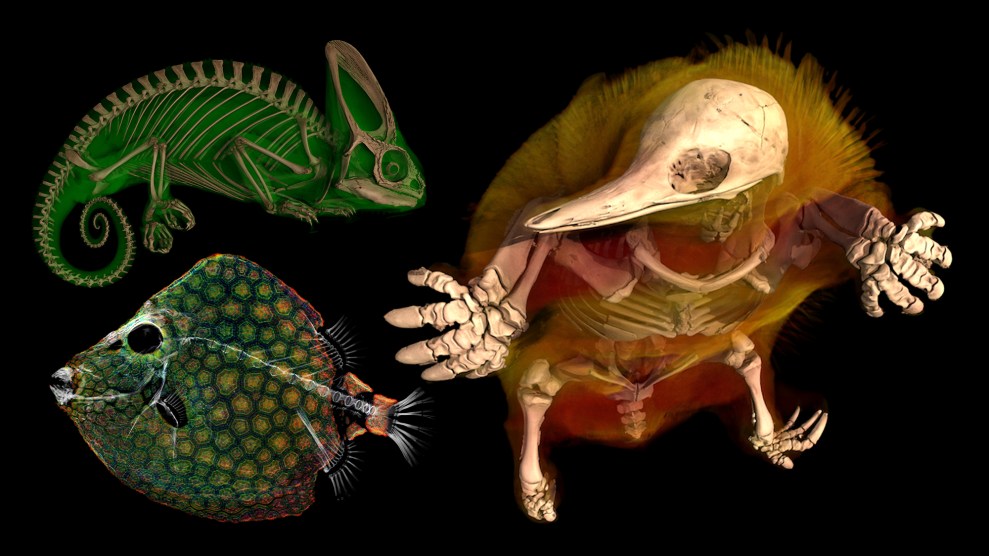When the coronavirus hit the United States last year, the pandemic sent a shockwave through the animal welfare community. In those early days before everyone you know had a “pandemic pet,” adoptions actually slowed as people adjusted to life in lockdown and many animal shelters were forced to close. Into the void stepped a New York–based charity, the Society for the Prevention of Cruelty to Animals International, for which the pandemic presented a useful—and lucrative—opportunity.
COVID has been a public relations boon for the organization, with its leaders quoted in the New York Times, in the Detroit News, and in a lengthy write-up by Forbes. In an uncertain landscape for animal lovers—remember when people weren’t sure if their pets might spread the virus?—SPCAI’s leadership offered itself as a credible expert. “Our global partnerships gave us unique insight into what was happening,” the charity’s then–executive director, Meredith Ayan, told one reporter last year.
Amid that PR blitz, the group capitalized on all the classic tropes of animal fundraising—solemn dogs with large, sad eyes, for instance—exploiting the enduring power of cute puppies to separate people from their dollars with pleas that urge donors to rescue “hungry and abandoned” pets. An SPCAI solicitation from this past May laid out the dire situation in India during a brutal surge of the pandemic. “They are operating with skeleton staffing because of reduced movement and rising numbers of COVID-19 cases,” the email warned. “And they are quickly running out of funds.” The appeal pledged that donations “will be rushed to groups in India that are keeping animals safe.” But anyone who’d spent time looking at the group’s financial records would find reason to be concerned with where their money would actually end up.
Despite the nearly identical acronyms, SPCAI is not affiliated with the 155-year-old American Society for the Prevention of Cruelty to Animals (the one you know from the Sarah McLachlan commercials) or your local animal shelter. Unlike shelters that directly care for rescued animals, SPCAI, which boasted a $21 million annual budget in its most recent tax filing, is more confusing, collecting money without making it overtly clear to funders that the organization is, at best, primarily a conduit. While it does run some programs itself, including a much-publicized effort to reunite US soldiers with the stray animals they befriended while on a deployment, it mostly serves to redirect the money it receives to other nonprofits through grants. The distinction is often lost in SPCAI’s advertisements, which suggest much more direct action. Plenty of other nonprofits operate in a similar fashion, but organizations that primarily give grants can be easy fodder for criticism when little of that money is directed toward the purported, charitable mission of the organization. (An SPCAI spokesperson said the charity “has made grants to more than 300 animal welfare organizations since 2007, including shelters around the world.”)

SPCA International fundraising appeals
Unlike the claims in its fundraising appeals, most of the money SPCAI collects never lands in the hands of an animal shelter. Since it was founded by longtime charity executive Pierre Barnoti as the international offshoot of a Montreal animal welfare charity, SPCAI has spent little more than 20 percent of its total revenue on actual programs and services that help animals. CharityWatch, a leading industry evaluator, says “highly efficient” charities allocate at least 75 percent of their donations to program services.
The recipient of most SPCAI donations during that span is a controversial series of fundraising firms that have frequently been a target for state and congressional investigators. Thanks to its costly, direct mail fundraising campaign, SPCAI has netted more than $170 million in revenue since it was founded in 2006, an astounding amount for any nonprofit, let alone one that counts fewer than 10 full-time staff members on its website. But more than 40 percent of that haul has gone to companies managed by Mark Schulhof and members of his family, who maintain long-standing ties to Barnoti. A review of SPCAI’s financial filings and interviews with several people connected to Barnoti and the charity show that he refused to cut ties with the Schulhofs, even after their initial company agreed to pay $10 million to New York state following an investigation into its deceptive advertising.
Laurie Styron, executive director of CharityWatch, says “there’s clearly a disconnect” between how SPCAI markets its services and “what they’re spending most of their money on.” Her organization has evaluated SPCAI seven times since 2009 and each time has given it an “F,” the lowest rating possible. (Not every charity evaluator rates it as poorly. Charity Navigator, a different watchdog, gives SPCAI two out of four stars, a rating that equals 71.99 out of 100 on its scale—a solid C-.)
Why does SPCAI perform so poorly in CharityWatch’s ratings? Because of its exorbitant marketing and fundraising costs and the paltry percentage of its revenues spent on charitable functions. “Donors may as well just skip the donation to SPCAI and put the money directly into the pockets of its professional fundraisers,” Styron told me. “It would make little difference.”

Not much is publicly known about Barnoti’s time before entering the animal welfare world. A former real estate agent, he emerged in 1994 at the center of a bizarre controversy involving the Montreal SPCA.
At the time, the decades-old animal rights organization was mired in debt. In November 1994, it hired its fourth leader in four months: a 44-year-old monk known as Brother Dominique. Days into his tenure, Dominique approved a lucrative contract for Barnoti’s company to run the charity’s fundraising campaign. The Montreal Gazette quickly uncovered two problems. First, Barnoti had declared bankruptcy a month earlier with “a 1971 Rolls Royce worth $2,500 as his sole asset.” And more curiously, Brother Dominique did not, in fact, appear to be a monk. The newspaper reported that “no outside authority seems able to confirm” Brother Dominique’s actual identity. Weeks after his hiring was announced, Dominique was fired.
Barnoti, who held a press conference to defend Dominique, insisted that their contract was valid. Barnoti described himself as an “ideal salesman” for the Montreal SPCA and said the charity’s image needed to be “smooth like Mother Teresa’s.” With allies on the board and deep influence within the charity, he began identifying himself in news reports as the Montreal SPCA’s “fundraiser and official spokesman” and by the end of 1995 “executive director” was added to that list of titles. “It was just one thing leading to another, and there I was, in charge,” he reflected to the Ottawa Citizen in 2000. “I could have built millions of dollars worth of real estate, but what I’m doing now is much more rewarding.”
Barnoti’s elevation brought stability at the top but also invited further controversy. In November 1995, several former charity employees alleged in a lawsuit that Barnoti was ignoring the organization’s charitable mission while driving up costs. A former executive director sued Barnoti for defamation. His legal problems continued in the early aughts. In 2006, a Canadian judge ordered the Montreal SPCA to pay a Quebec marketing firm nearly $100,000 owed as part of a contract that was apparently disregarded.
The next year, Barnoti drew headlines for pursuing a controversial fundraising strategy that relied on confusing donors into thinking the Montreal SPCA was a national charity. Instead of marketing the charity as based in Montreal, Barnoti used the organization’s legal name: the Canadian Society for the Prevention of Cruelty to Animals. Donors from all over the country sent in money, but were outraged when the Globe and Mail, a Canadian newspaper, revealed the scheme in a 2007 exposé. “Oh, my golly,” one Ontario resident told the newspaper, when asked about his elderly mother’s donation. “That’s terrible.”
Barnoti did not appear to be overly concerned. “If I knew that my mother had donated to a cause where people have misled her or given her false information, I would be devastated,” he told the paper. “On the other hand, if my mother, who’s 91, donated to a good cause but isn’t sure where this cause is, as long as I knew that the money went to the right place and served the right mission, I’d be perfectly happy.”
The group’s donations soared, but so did its cost of fundraising. Meanwhile, by the mid-2000s, the newspaper reported that Barnoti had become “the majority shareholder of a $1.7-million shopping mall” south of Quebec City.
Charity executives are not expected to dress and travel like Fortune 500 CEOs, but Barnoti, now in his early 70s, frequently maintained that air of sophistication, even as his charity ran into trouble. A person who knows Barnoti professionally, but requested anonymity to speak frankly, described him to me as “this wannabe cosmopolitan person” who always kept his hair slicked back and regularly wore a silk ascot. A different source who knows him well said Barnoti “doesn’t carry himself in a very humble way” and can be “petty” with co-workers. A former Montreal SPCA board member was even more blunt. “I have sufficient reason to believe that several board members have fallen under the spell of a silver-tongued demon,” he said in a 1994 letter of resignation quoted by the Gazette. (Asked about this and various other claims in this story, an SPCAI spokesperson said, “Pierre Barnoti will not be responding to these as there is no basis to these questions and they are full of innuendos.”)
In 2006, Barnoti launched SPCA International to solicit more foreign donations after it was “discussed at a board meeting in Montreal,” the Gazette reported. Barnoti quickly developed it as an independent organization based in the United States. To build SPCAI’s website, he enlisted an internet entrepreneur named Richard Gordon, who was “among the first” people to process credit card transactions online, according to a detailed 2008 New York Times report about his business. Gordon handled credit card transactions for online gamblers and the website hosting Tommy Lee and Pamela Anderson’s sex tape, but he also did business with the American Bible Society, whose leader, Paul Irwin, introduced him to Barnoti. (That relationship became its own subject of scandal because Gordon once served more than two years in prison for mail fraud. After their relationship was exposed by the Times, Irwin was ousted.)
Gordon managed what was perhaps the charity’s most valuable resource—the SPCA.com domain name—and his business partner, J.D. Winston, became SPCAI’s first executive director. Between 2007 and 2009, SPCAI paid Gordon’s companies nearly $500,000 for marketing and web development. But that figure hardly captures the breadth of Gordon’s influence in those early days. An advertiser for the site told the Times that they did not pay SPCAI, “but a separate entity, the SPCA Foundation,” which Gordon’s lawyer had registered as a for-profit company. In an even more bizarre connection, Gordon set up a partnership between SPCAI and Stickam, a live-cam service owned by a Japanese pornographer who happened to be one of Gordon’s main financiers. (The Times headline succinctly got at this strange confluence of people and places: “An E-Commerce Empire, From Porn to Puppies.”)
For fundraising, Barnoti tapped a firm he knew well: Quadriga Art, an American company run by Mark Schulhof and his uncle, Thomas. The men have become known in the nonprofit world for propping up little-known charities with aggressive—and often misleading—marketing campaigns. Barnoti had already made the Schulhofs’ company one of the Montreal SPCA’s biggest vendors and their role in his new organization became even more substantial. They were tasked with managing SPCAI’s direct-mail marketing campaign.
That relationship would prove unnaturally resilient—through legal troubles and a wealth of bad press. Within two years of SPCAI’s launch, Barnoti had become the subject of protests back home after a local television network reported that SPCA International had racked up huge costs while, under Barnoti’s leadership, the Montreal SPCA was accused of euthanizing a high volume of animals.
In 2008, the Montreal SPCA fired Barnoti while he was on sick leave and sued him to claim access to SPCA.com. The two sides eventually settled and Barnoti surrendered the domain in 2010, but the damage done by his tenure was far from over. Four years after Barnoti was fired, the Montreal SPCA still owed Quadriga nearly $2 million for charges Barnoti accrued while leading the organization. The fundraising firm even had a lien placed on the charity’s headquarters, CNN reported in 2012.
Élise Desaulniers, who now runs the Montreal SPCA, told me, “When you say the name ‘Quadriga’ at Montreal SPCA, everyone gets nervous.” To rid themselves of debt to Quadriga, the charity had to take out a loan. When new leadership took over after Barnoti’s departure, she said, “there was almost nothing left back. They had to rebuild from scratch.”

I first came across Barnoti and SPCA International while reporting a story about a different Quadriga client: the Disabled Veterans National Foundation. That charity, which similarly featured sky-high fundraising costs with little programming to show for it, led me to look into other charities that had worked with Quadriga and continued soliciting work from the Schulhofs’ next company, Innovairre. What became clear almost immediately is how the Schulhofs occupy a weird—and strangely resilient—role in the nonprofit world. Despite a stretch of detractors, they are known for being talented operators with a keen eye for raising money—and never staying down for long.
“Innovairre does not have a good reputation,” Shannon McCracken, chief executive of the Nonprofit Alliance, an industry advocacy group, told me. “They do work with some upstanding nonprofit organizations,” she said, but “there remains a residual concern that some of the former business practices, which were well documented with the New York [settlement], have carried over to the renamed firm.”
Their involvement at SPCAI mirrors their work with other charities, including the organization for disabled veterans. They home in on subjects that pull at the heartstrings like animals in need of shelter or soldiers wounded in war, then raise astounding amounts of revenue in a short amount of time through an extensive direct-mail campaign, which rockets the charity to prominence but also drives it into debt—most of it owed back to the fundraising fees charged by the Schulhofs’ companies. The approach has helped create a windfall for those businesses but has also led to legal challenges.
By 2012, eight years after launching, SPCAI had raised nearly $57 million—and given almost $30 million to Quadriga. That June, CNN reported that SPCAI was spending less than 0.5 percent of the money it raised on grants to help animals in need. It ran a deficit at the end of that year of nearly $9 million due mostly to Quadriga and its affiliates, an independent audit concluded.
SPCAI’s signature program, Operation Baghdad Pups, had sold donors on the emotional reunions between soldiers returning from overseas deployments with the stray pets they had found in war zones. Dodo, an animal-rights media brand with nearly 10 million subscribers on YouTube, featured one particularly joyful example in a 2019 video titled, “Puppy Is SO Happy To Reunite With Her Soldier Dad.” Daniel Rindone, a former Army Ranger, had deployed to Syria when he met a Canaan dog he’d come to call Syri. “If I had the ability to give her the kind of life that she deserved,” he said in the video, “then I had to bring her back.” Rindone would go on to join the SPCAI board of directors, but he left this past December. “I can’t say enough good things about the staff,” he told me. “They live, breathe, and work for the dogs, cats, and animals that they save. The intention is there to go and rescue every animal they can.”
But experiences like his were rare in the early days of the program. CNN found in 2012 that “only 26 of the nearly 500 animals transported to the United States from Iraq and Afghanistan were actually service animals.” Those animals “were not attached to military K-9 units but belonged to Reed Inc., a private contractor that built roads in Iraq and Afghanistan.”
That year, CNN released several more articles exposing how fundraisers, including Quadriga, benefit from racking up ludicrously high expenses from charities with little philanthropic impact to show for it. A year later, the Kids Wish Network in Florida, another Quadriga client, was named the “worst charity in America” by the Tampa Bay Times and the Center for Investigative Reporting.
By then, legal authorities were circling the Schulhofs’ company. In July 2014, the New York attorney general’s office announced a landmark legal settlement with Quadriga and DVNF that directly accused the Schulhofs of false advertising. One solicitation, which the New York AG’s office outlined in a legal filing accompanying the settlement, described an Afghanistan veteran named Arnie who “suffered severe brain and leg injuries” after his vehicle was hit by a bomb. The entire story was bogus, but unsuspecting donors had no clue. When asked about this settlement during my reporting for a previous story, an Innovairre spokesperson had said, “Innovairre did not then, and does not now, knowingly engage in any fundraising activity that involves misleading or factually incorrect information.” Innovairre did not respond to multiple requests for comment for this story.
Quadriga agreed to pay nearly $10 million and forgave DVNF’s massive debt as part of what the New York authorities called the “largest amount of financial relief ever obtained in the US for deceptive charitable fundraising.” The state AG essentially accused Quadriga of using the charity as a front to boost its own bottom line. “To take the money that people are trying to spend to help disabled veterans just to feed your own overhead and to pay off your executives as Quadriga did here is pretty despicable,” former New York Attorney General Eric Schneiderman told CNN at the time. Investigators in California and the Senate Finance Committee opened probes into Quadriga and for months the organization laid low.
But the Schulhofs never actually went away. Later that year, they relaunched a company offering similar services under the new name Innovairre and several preexisting clients—including SPCAI, DVNF, and Kids Wish—signed new contracts with them. Mark Schulhof was “not part of the management team that runs Innovairre day to day,” an Innovairre spokesperson told the Chronicle of Philanthropy in December 2014, but he remained chief executive of the holding company that includes Innovairre and its affiliates. (In other forums, Innovairre seemed to blur that distinction. A press release from June of this year described Schulhof as the “former CEO of Innovairre.”)
After paying Quadriga roughly $5.6 million in 2014, SPCAI sent Innovairre $2.4 million the following year. That rate quickly increased, with nearly $28 million total transferred from SPCAI to Innovairre between 2016 and 2019, the most recent year for which figures are available. SPCAI’s grant-giving has increased substantially in recent years—from less than $250,000 in 2014 to more than $7 million in 2015. After spending less than 2 percent of its revenue between 2007 and 2014 on grants and services, SPCAI’s charitable giving to its partner shelters went up in 2015, the same year Ayan took over permanently as executive director. In 2019, the charity gave shelters more than $1.2 million in grants.
But even with more grants distributed, Innovairre continues to take a sizable chunk of the charity’s donations each year. In 2019, SPCAI brought in more than $21 million, the most in its history. More than 40 percent of it went to Innovairre, the highest percentage of annual revenue redirected to SPCAI’s fundraiser since the Quadriga days.
That decision apparently sparked major concerns among the staff, many of whom were opposed to working with Innovairre. A letter drafted by several SPCAI staffers to the board in summer 2019 expressed “grave reservations about this significant investment of funds and the damage it could do to our organization’s reputation.” The letter, which was never ultimately sent due to employee fears of retaliation from the board, went on to recommend a competing fundraising firm that staffers said would be a “better choice” than Innovairre and argued that the public scrutiny of DVNF could affect SPCAI. “The concerns the New York Attorney General had about DVNF’s investments with Quadriga are the same as ours today,” the staffers wrote. “With this new $2.6 [million] contract, Innovairre will have an undue amount of control over SPCA International’s fundraising strategy.”
Even after the switch in name, nothing about Innovairre’s relationship to SPCAI appeared to have functionally changed. When I asked an SPCAI spokesperson why the company would continue to work with Innovairre, she replied, “In 2014, the SPCA International board determined it was in the organization’s best interest to continue working with Innovairre.” (That spokesperson later quit the company and my future requests for comment were routed to a public relations firm, which, when asked about staff concerns over Innovairre, told me: “Anytime a question about fundraising is brought to the Board’s attention, it is immediately analyzed and any subsequent decisions and actions taken by the Board are in the interest of the mission of SPCAI and the animals and people the organization serves.”) The board, throughout SPCAI’s existence, has been chaired by Barnoti and mainly stacked with his associates, most of whom were part of his inner circle at the Montreal SPCA. They appear to have no problem paying a premium for Innovairre’s services.
Innovaire, which is based in New Jersey, claims to work with “more than 500 charities” from offices across the globe, including in Malaysia and India. Mark Schulhof stepped down as chief executive in 2019 but remains executive chair of the board.
The scant public details on the Schulhofs confirm little beyond their wealth and a strangely saccharine self-image. “I was sitting at home with my family after Thanksgiving and looking forward to the holiday season thinking of how lucky I really am,” Mark Schulhof wrote in a Facebook post from 2016. “During the holidays there are so many out there who could use a hand and thankfully so many others offering theirs. It’s such an inspiration working with so many non-profits who are focusing their efforts and their lives to give to those in need.”
Mark maintains this stance on his personal website, where he identifies as a “entrepreneur and social activist.” That way of thinking carries over to Innovairre’s official marketing language, which is mired in upbeat, self-help language. The company’s slogan? “We help people who help people.”

When prospective donors subscribed to SPCAI’s mailing list, they used to receive a friendly solicitation from Ayan, the executive director, recounting the “critical, lifesaving work” the charity does for animals across the globe. She signed the message, “For the animals.”
The signature on those emails has changed. On June 15, Ayan announced her exit, making her the fourth charity employee to leave in recent months. After I requested a comment from her for this article, Ayan said in a statement, “I had a wonderful 11 years with SPCAI. In the 7 years I was executive director we increased grantmaking to over $1M per year, rescued over 100 animals for servicemen and women annually and provided extensive global emergency relief. I’m proud of the work we accomplished during my time there.”
Even as the charity enters a period of uncertainty and transition, its star has never been higher in the media. In recent months, SPCAI has benefited from the kind of public relations push that larger charities must envy. After a wave of coronavirus-related coverage last spring, Forbes profiled the Baghdad Pups program in a December story that credited the charity with returning 47 pets from Iraq during the pandemic. None of the pieces mentioned the program’s scandalous past.
In late July, SCPAI’s fundraising emails were back in my inbox—no email signature this time—recounting the charity’s work, “from treating starving donkeys in Tanzania to rescuing abandoned cats in Brazil.” My donation, I was promised, would be rushed to the cause of my choosing, with no mention that SPCAI—per its latest public filings—gave more than $9 million of its revenue to Innovairre. “No matter which one you choose,” the email pledged, “you’ll be helping hungry, sick, hurting, and scared animals.”


